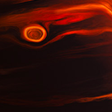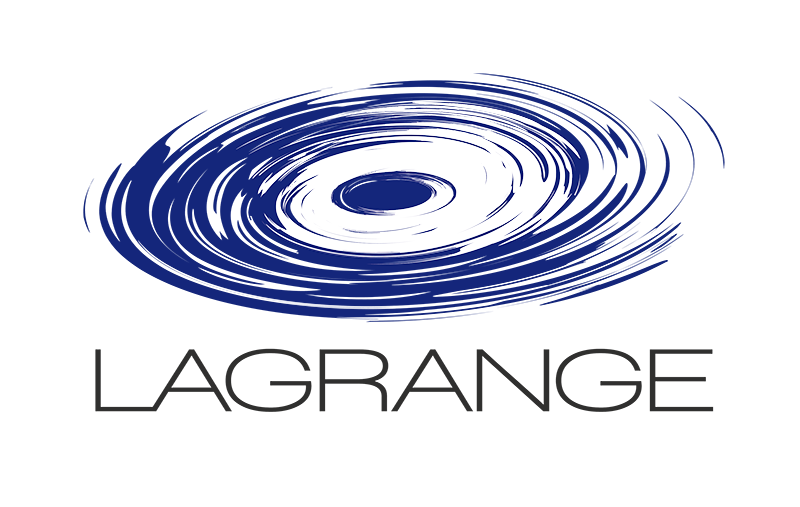News
2024 Fizeau and Michelson Prize Winners Announced
- Details
The Fizeau and Michelson Prizes were awarded to Drs. Steve Ridgway and Peter Tuthill, respectively, at the SPIE conference in Yokohama, Japan, on June 21, 2024, in recognition of their scientific contributions to the field of astronomical interferometry.
First map of Jupiter's winds using Doppler spectroscopy
- Details
An international team of scientists managed to produce the first map of the atmospheric circulation of Jupiter by using Doppler spectroscopy, whereas previous measurements were derived by measuring cloud motions from time-separated images. Such a technical performance was realized thanks to the imaging spectrometer JOVIAL specially dedicated to measuring motions in the atmosphere of Jupiter, which can be seen as a proof of concept for future space-borne instruments.
The disk with three rings making metal-rich planets
- Details
How Earth and the Solar System were formed, is an age-old question of humankind. By studying the present state of our planet, scientists were able to trace back our planetary history to the very beginning. Now we know that Earth formed from the dust which encircled the newborn Sun 4.5 billion years ago.
NASA’s Webb Identifies Methane In an Exoplanet’s Atmosphere
- Details
NASA’s James Webb Space Telescope observed the exoplanet WASP-80 b as it passed in front of and behind its host star, revealing spectra indicative of an atmosphere containing methane gas and water vapor. While water vapor has been detected in over a dozen planets to date, until recently methane – a molecule found in abundance in the atmospheres of Jupiter, Saturn, Uranus, and Neptune within our solar system – has remained elusive in the atmospheres of transiting exoplanets when studied with space-based spectroscopy. Taylor Bell from the Bay Area Environmental Research Institute (BAERI), working at NASA’s Ames Research Center in California’s Silicon Valley, and Luis Welbanks from Arizona State University tell us more about the significance of discovering methane in exoplanet atmospheres and discuss how Webb observations facilitated the identification of this long-sought-after molecule. These findings were recently published in the scientific journal Nature. Vivien Parmentier, researcher at Côte d'Azur Observatory, participated in the analysis and interpretation of the data. Now that this first overview of the data has been published, he and phd Nishil Mehta at Côte d'Azur Observatory will study the interaction between chemistry and atmospheric circulation using complex three-dimensional models.
Gaia's Focused Product Release
- Details
On Tuesday 10 October 2023, an intermediate version of the Gaia data will be published between DR3 (June 2022) and DR4 (end 2025). This has kept the researchers and engineers in the Gaia team in Nice busy! To explain the properties and main results of this data, five research articles will be published at the same time (see link below). For three of them, researchers from the Observatoire de la Côte d'Azur were among the main authors. They cover a wide range of subjects, from the solar system to distant quasars.
Asteroseismology catches the dress rehearsal for an upcoming cosmic ballet
- Details
The study, led by Dr. Siemen Burssens of KU Leuven, Belgium and published in Nature Astronomy, applied the technique of asteroseismology to study the variability of a newly discovered pulsating star known as HD 192575.
NASA’s Webb Takes Closest Look Yet at Mysterious Planet
- Details
 An international scientific team, including Côte d'Azur University Professor Vivien Parmentier, has gained new insights into the atmosphere of a « mini-Neptune », a common type of planet in the galaxy but about which little is known. Vivien Parmentier's contribution was to develop the theoretical models that determined that a heavy atmosphere is necessary to reduce heat transport from the day side to the night side of the planet.
An international scientific team, including Côte d'Azur University Professor Vivien Parmentier, has gained new insights into the atmosphere of a « mini-Neptune », a common type of planet in the galaxy but about which little is known. Vivien Parmentier's contribution was to develop the theoretical models that determined that a heavy atmosphere is necessary to reduce heat transport from the day side to the night side of the planet.
Weather report: Expect scattered, patchy clouds made up of silicates on planet VHS 1256 b
- Details
 To date, despite the huge number of exoplanet discoveries, the formation and properties of giant planets remains a mystery. Giant exoplanets sculpt young exoplanetary systems, and might determine whether smaller Earth-like planets could be capable of harboring life. The observation and characterization of the properties of young exoplanets is crucial to help scientists to understand what giant exoplanets are made of, how they differ from Jupiter and Saturn, and how they formed.
To date, despite the huge number of exoplanet discoveries, the formation and properties of giant planets remains a mystery. Giant exoplanets sculpt young exoplanetary systems, and might determine whether smaller Earth-like planets could be capable of harboring life. The observation and characterization of the properties of young exoplanets is crucial to help scientists to understand what giant exoplanets are made of, how they differ from Jupiter and Saturn, and how they formed.
Gravity+ : an important step has been taken
- Details
The success of the GRAVITY interferometric instrument on the Very Large Telescope Interferometer (VLTI), in particular with results of the confirmation of general relativity in strong regime which it provided on the black hole of our galaxy, SgrA*, led to the start of a project of instrumental and infrastructure improvements in order to extend this level of performance to the field of the exoplanets (high contrast adaptive optics) and to extragalactic astrophysics (laser guide stars) ; it is the GRAVITY+ project and mainly concerns the improvement of the performance of the adaptive optics of the VLTI. The Gravity+ consortium, composed of MPE, CNRS (through LESIA, IPAG, Lagrange & CRAL), MPIA, University of Cologne, CENTRA laboratory, Southampton University as well as ESO, has been working for 3 years on the design and the realization of 4 identical adaptive optics systems which will replace the MACAO systems, more than 20 years old. MPE is the prime contractor and responsible for the manufacturing of the wavefront sensors for natural and laser guide stars; LESIA is in charge of the realization of the real time computer and IPAG, in collaboration with ALPAO are developing the wavefront correction device (deformable mirror with 41x41 actuators). OCA is in charge of the integration of these components on an optical bench which reproduces the VLT's Coudé beam.
A “cantaloup” melon solar shape ?
- Details
 What is the origin of the air we breathe, of the water in our seas and oceans, where does daylight come from, why is there a terrestrial climate, why are there auroras, why...? The answer lies in the sky. The stars are a great supplier of chemical elements, and our Sun is the source of life. Since time immemorial, man has been concerned with knowing more and more about the stars, their movement, their size, their composition... Thus, astronomy was born informing us about the celestial stars. These are described by various characteristics, mass, diameter, rotation, temperature, chemical composition, etc... to which are added the place of this body in the universe, its history, and even, in the case of the sun, its repercussions on the history of humanity.
What is the origin of the air we breathe, of the water in our seas and oceans, where does daylight come from, why is there a terrestrial climate, why are there auroras, why...? The answer lies in the sky. The stars are a great supplier of chemical elements, and our Sun is the source of life. Since time immemorial, man has been concerned with knowing more and more about the stars, their movement, their size, their composition... Thus, astronomy was born informing us about the celestial stars. These are described by various characteristics, mass, diameter, rotation, temperature, chemical composition, etc... to which are added the place of this body in the universe, its history, and even, in the case of the sun, its repercussions on the history of humanity.
- The chemical signature of the Galactic spiral arms revealed by Gaia
- The Comet Interceptor space exploration mission
- The inside story of NASA's mission to Psyche
- The stellar structure with the lowest metallicity of the Universe
- First stellar occultations in remote observing mode by the UniversCity telescope
- Liquid water on exomoons of free-floating planets
- Research engineer Software engineering
- Research engineer Instrumental development
- The 2021 Chesneau prize was awarded to Mathias Nowak
- Apophis asteroid observed for the first time by the stellar occultation technique
- Launch of Europe’s largest astronomy network
- Celebrating two decades of SPHERE challenges and achievements
- Astronomers see whirlwind around possible exoplanet-in-the-making
- Bye bye VEGA, Happy New Year to SPICA !
- Happy birthday to Betelgeuse! b.t.w. MATISSE is back online !
- Cracking the crack code of asteroid rocks
- Exogenic Basalt on Asteroid (101955) Bennu
- Ammonia-rich hail sheds new light on Jupiter’s weather
- What if the keys to the metamorphism of carbonaceous chondrites were found …in the volcanic archipelago of the Kuril Islands, South Kamchatka?
- First live observation of a meteoroid impact on the Moon !
- France delivers NISP instrument for europe’s Euclid space mission
- ESO Telescope Sees Surface of Dim Betelgeuse
- Impacts on weak carbonaceous asteroid simulant material
- A study poses a new constraint on the mass of "graviton"
- Images from Ryugu show rocks similar to carbonaceous chondrite meteorites
- Second planet for the iconic Beta Pictoris system
- The early days of the Milky Way revealed
- A “cosmic aurora” lights up the connection between two galaxy clusters
- Gaia’s first asteroid discoveries
- Outgassing processes Workshop
- Discovery of a star survivors of the first ages of the universe
- Juno measures the depth of Jupiter’s winds
- The first light of MATISSE
- First results from Microscope satellite confirm Albert Einstein’s theory of relativity with unprecedented precision
- The deepest spectroscopic survey ever !
- MATISSE : Innovation trophy winner
- Ageing Star Blows Off Smoky Bubble
- The oldest asteroid family in the Main Belt sharpen our view of how the planets formed
- VIRGO joins LIGO for the “Observation Run 2” (O2) data-taking period
- Solar gravity modes reveal rapid rotation in its core
- First discovery of an exoplanet by SPHERE
- Jupiter’s complexity revealed by Juno
- Workshop “Gaia for teachers”
- NIKA captures the merging of galaxy clusters
- French researchers push forward radio image quality in view of the SKA telescope
- First image of the visible photosphere of a star other than the Sun
- Rapid temperature changes and the early activity on comet 67P/Churyumov-Gerasimenko
- A Celestial Butterfly Emerges from its Dusty Cocoon
- 2015 Olivier Chesneau Prize Awarded to Julien Milli
- A strong prediction of the “Nice model” validated by the Rosetta mission
UMR LAGRANGE
Observatoire de la Côte d’Azur
Boulevard de l’Observatoire
CS 34229 - F 06304 NICE Cedex 4
Tél. : +33 (0)4 92 00 30 11
Fax : +33 (0)4 92 00 30 33






